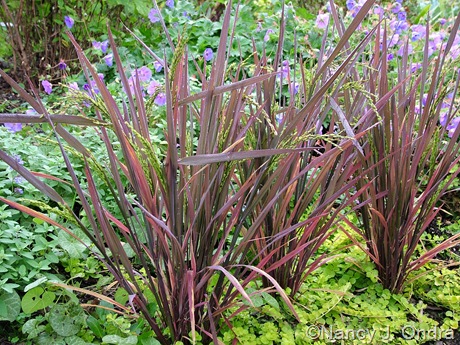 |
| Oryza sativa ‘Red Dragon’ |
Fun, fanciful, or even downright silly, cultivar names often offer some clues as to what a plant might look like. If you want a hint as to where that plant might grow best, though, the botanical name is a better place to look. I’m going to save specific place names for another post, but for this one, I’ve collected a bunch of epithets that relate to general plant habitats.
 |
| Allium sativum |
Many familiar plants have been grown by people for so long that it’s reflected in their botanical name. For “cultivated” in general, there’s sativus (and sativa and sativum), and there are lots of familiar examples: Allium sativum (garlic), Coriandrum sativum (cilantro), Crocus sativus (saffron crocus), Eruca sativa (arugula), Lactuca sativa (lettuce), Oryza sativa (rice), and parsnips (Pastinaca sativa).
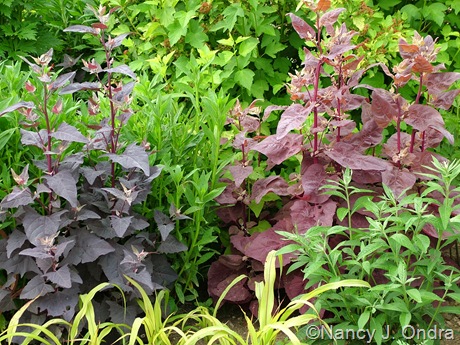 |
| Atriplex hortensis var. rubra and ‘Magenta Magic’ |
For garden (think “horticultural”) origin, there’s hortense, hortensis, and hortorus (-a, -um), as in Atriplex hortensis var. rubra (red orach), Satureja hortensis (summer savory), and Pelargonium x hortorum (zonal geraniums).
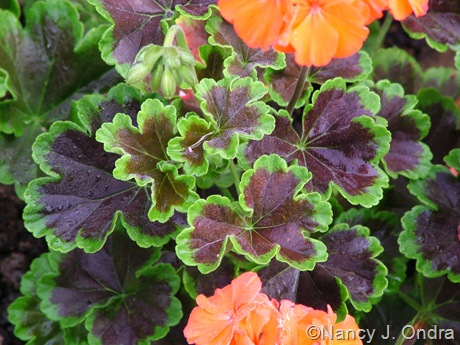 |
| Pelargonium x hortorum ‘Black Velvet Scarlet’ |
Getting more specific, there’s muralis and murale for plants that typically grow in walls; think of Gypsophila muralis (low baby’s breath) and Cymbalaria muralis (Kenilworth ivy). There’s even a name for plants that grow on roofs: tectorum—as in Iris tectorum (Japanese roof iris), houseleek (Sempervivum tectorum), and Elegia [Chondropetalum] tectorum (thatching reed).
As we all know, where there’s cultivated ground, there are usually weeds. Little wonder, then, that so many plants that are common crop weeds have arvensis or arvense – meaning “of cultivated land” – in their name. There are lots of examples for this one, including Anagallis arvensis (scarlet pimpernel), Cirsium arvense (Canada thistle), Convolvulus arvensis (field bindweed), and field horsetail (Equisetum arvense).
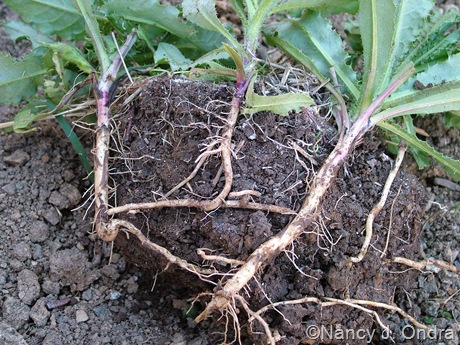 |
| Cirsium arvense |
For those specifically associated with corn (grain) fields, there’s segetalis, segetale, and segetum, as in Glebionis [Chrysanthemum] segetum, a cute little annual known as corn marigold.
Plants that commonly grow in meadows have their own terms: pratensis and pratense. Among them are Alopecurus pratensis (meadow foxtail), Geranium pratense (meadow cranesbill), Salvia pratensis (meadow sage), and Trifolium pratense (red clover).
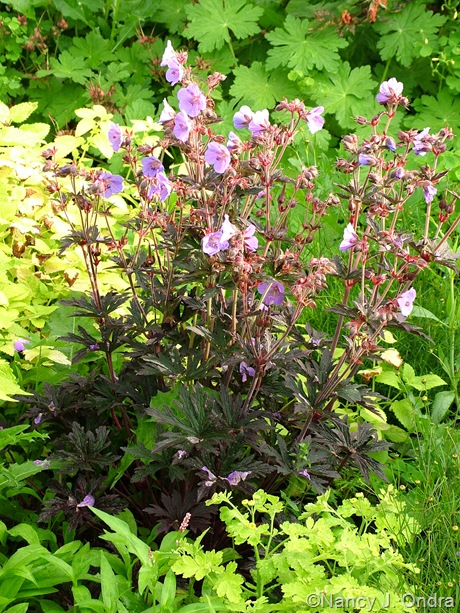 |
| Geranium pratense ‘Dark Reiter’ |
For open fields, plains, or other level places, there’s campestris and campestre, as in Agaricus campestris (meadow or field mushroom) and Acer campestre (field maple). Moving upward, collinus (-a, -um) indicates plants that are found growing on hills or slopes, such as Tiarella cordifolia var. collina (foamflower) and Daphne collina.
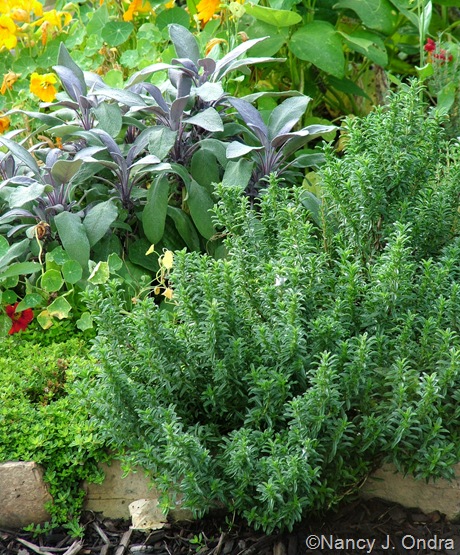 |
| Satureja montana |
Epithets that relate to mountainous origins appear in the names of a number of garden plants. For mountain habitats in general, there’s the obvious montanus (-a, -um): Alyssum montanum (mountain madwort), Centaurea montana (mountain bluet), Clematis montana, Pueraria montana var. lobata (kudzu), and Satureja montana (winter savory).
 |
| Centaurea montana ‘Gold Bullion’ |
High in the mountains, above the tree line, is the alpine habitat, indicated in names by alpestris, alpestre, and alpinus (-a, -um). It’s surprising how many of these plants named for this habitat have adapted to life in our gardens, too: among them, Myosotis alpestris (alpine forget-me-not), Alchemilla alpina (alpine lady’s mantle), Clematis alpina (alpine clematis), Dianthus alpinus (alpine pink), Epimedium alpinum (alpine barrenwort), Eryngium alpinum (alpine sea holly), and Ribes alpinum (alpine currant).
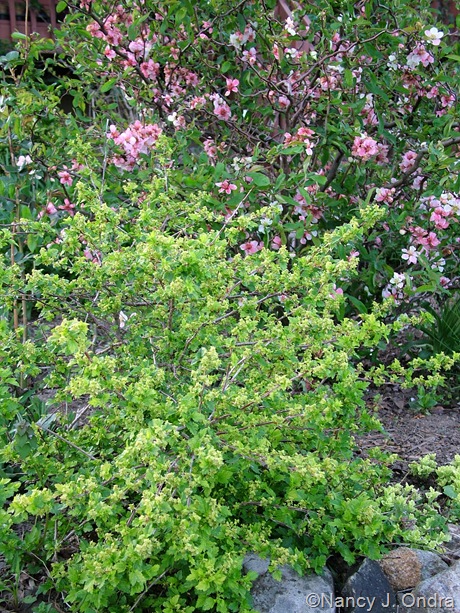 |
| Ribes alpinum ‘Aureum’ |
And for plants often found growing near or in snow, there’s nivalis and nivale, as in Galanthus nivalis (snowdrops) and Trillium nivale (snow trillium). Other names specifically related to cold regions include frigidus (-a, -um) – Petasites frigidus (arctic butterbur), for example – and glacialis (or glaciale), as in Ranunculus glacialis (glacier buttercup).
Now, let’s forget all that cold and snow and move on to some moist habitats. It’s not surprising that some common water-garden or pondside plants have aquaticus (-a, -um) – for “growing in or near water” – in their name: for example, Myriophyllum aquaticum (parrotfeather) and Orontium aquaticum (golden club).
The banks of brooks, streams, and rivers get their own terms: rivalis, rivale, rivularis, and rivulare. Think of Geum rivale (water avens), Trillium rivale (brook wakerobin), Iliamna rivularis (streambank wild hollyhock), and Cirsium rivulare (brook thistle).
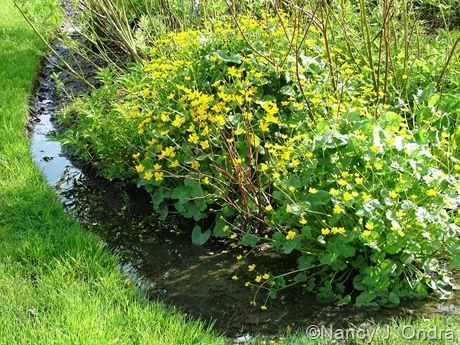 |
| Caltha palustris |
The words for wetlands – marshes, swamps, and other soggy spots – are palustris, palustre, and uliginosus (-a, -um). Some familiar plants native to these habitats include Equisetum palustre (marsh horsetail), Caltha palustris (marsh marigold), Quercus palustris (pin oak or swamp Spanish oak), and Salvia uliginosa (bog sage).
 |
| Crambe maritima |
Littoralis, littorale, and maritimus (-a, -um) all relate to maritime (coastal) habitats, making them useful clues to plants that might be salt tolerant. Some you may recognize: Armeria maritima (sea thrift), Crambe maritima (sea kale), Pancratium maritimum (sea daffodil), and Prunus maritima (beach plum).
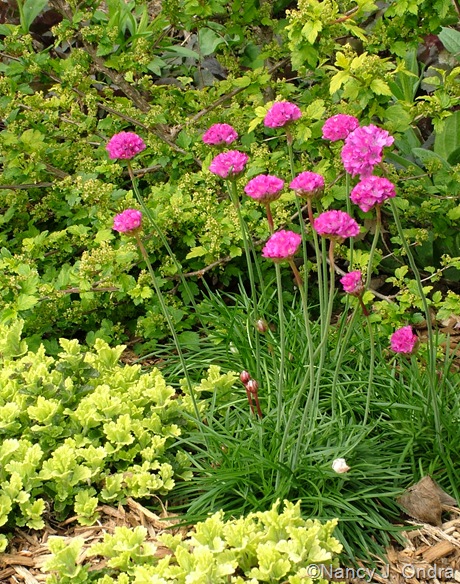 |
| Armeria maritima |
Sandy places – at the sea shore or elsewhere – have their own epithets: arenarius (-a, -um) and arenosus (-a, -um), as in Arenaria montana (mountain sandwort), Dianthus arenarius (sand pink), and Leymus [Elymus] arenarius (sand rye, also known as blue Lyme grass). There’s an easy-to-remember epithet specifically for desert habitats: desertorus (-a, -um), as in Agropyron desertorum (desert wheatgrass).
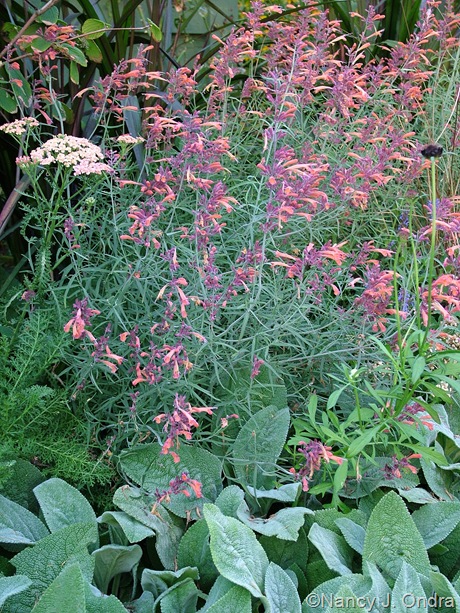 |
| Agastache rupestris with Stachys byzantina ‘Big Ears’ |
Rock gardeners will recognize many of the epithets that relate to plants found growing among rocks, though many of these plants also adapt well to life in ordinary, well-drained beds and borders.
- Petraeus (-a, -um): Daphne petraea, Dianthus petraeus, Erodium petraeum
- Rupestris, rupestre: Sedum rupestre, Agastache rupestris
- Rupicolus (-a, -um): Penstemon rupicola (rock penstemon)
- Rupifragus (-a, -um): Papaver rupifragum
- Saxatilis, saxatile: Aurinia saxatilis (basket of gold), Geranium saxatile, and Iberis saxatilis (candytuft)
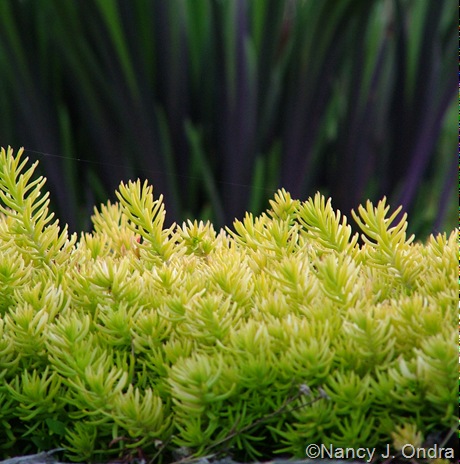 |
| Sedum rupestre ‘Angelina’ |
And to finish, a collection of names that relate to shady, woodland or grove habitats, with ample examples:
- Nemoralis, nemorale: Dendrobium nemorale, Solidago nemoralis (gray goldenrod)
- Nemorosus (-a, -um): Anemone nemorosa (wood anemone), Salvia nemorosa (wood sage)
- Sylvaticus (-a, -um): Geranium sylvaticum (wood cranesbill), Myosotis sylvatica (wood forget-me-not)
- Sylvestris, sylvestre: Anthriscus sylvestris (wild chervil), Nicotiana sylvestris (woodland tobacco)
- Umbrosus (-a, -um): Saxifraga umbrosa, Veronica umbrosa
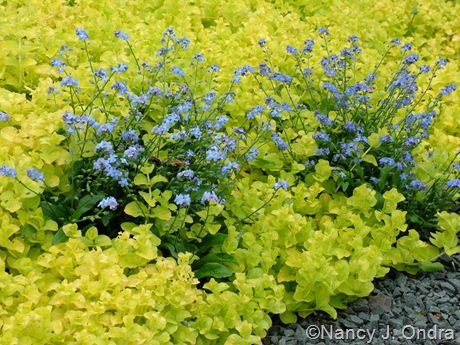 |
| Myosotis sylvatica ‘Ultramarine’ with Lysimachia nummularia ‘Aurea’ |
Keep in mind that a habitat-related name doesn’t always mean that a plant normally grows in that sort of site. The epithet palustris, for instance, might make you think that Pinus palustris (longleaf pine) naturally grows in swampy spots, but it’s actually most common in upland sites with dry, sandy soil. And don’t expect great performance from Salvia nemorosa (wood sage) in a shady site, despite both the common and botanical names. It’s just another one of those quirky things about nomenclature that keep us from getting complacent, I guess.
